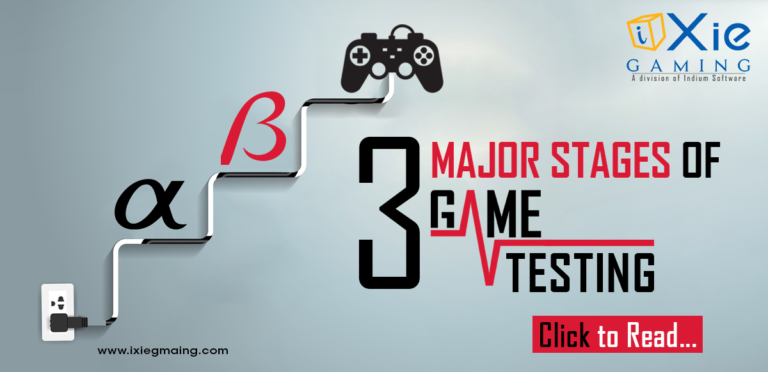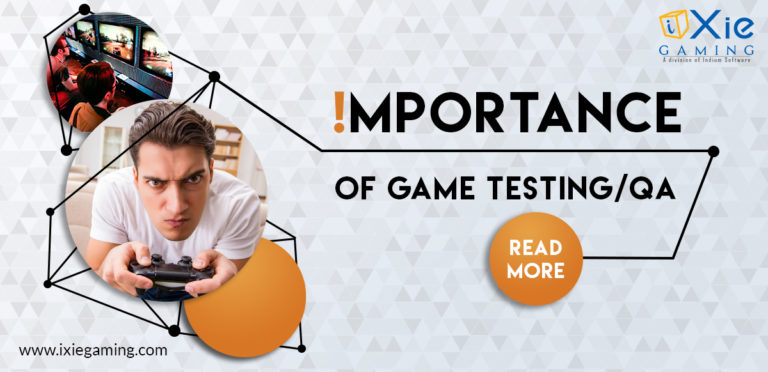Beta testing is a critical game quality assurance (QA) process. It allows you to detect technical problems in your game and assess gameplay and balance. This ensures customer satisfaction by delivering a game that provides a seamless experience. You can think of beta testing as a pre-release measure to identify performance and gameplay issues before the actual launch.
But what is beta testing? What are the several types of beta tests? And what does it matter in game development? Join us as we explore the role of beta testing in game development, ensuring high-quality games while preventing costly post-launch errors.
What is Beta Testing?
When it comes to game development, you must ensure a high-quality game that meets players’ expectations. However, you can’t determine whether a game is good unless you play it. This way, you can evaluate a game’s performance and behavior from the player’s perspective. And that’s where beta testing comes in.
Beta testing is a software development stage where developers thoroughly test their product before its official release. In the game development space, developers perform beta testing as part of user acceptance testing, whereby they involve people outside the organization to evaluate the game’s reliability, performance, and usability.
The ultimate goal of beta testing is to ensure that your game meets its intended use when released to the intended audience. Therefore, beta testers can be paid professionals (for thorough feedback and testing), or volunteers drawn from existing fans or users of the game.
Types of Beta Testing in Game Development
There are two types of beta testing. Here’s a quick guide on each of these beta-testing approaches:
Open Beta
As the name suggests, open beta testing is open; anyone can play the game during the beta testing period. With open beta testing, developers collect feedback from a wider audience. This enables them to get more data from a diverse audience, leading to better identification of issues.
Also, developers can assess how well their games run on multiple platforms through open betas. This is because they enable users from different platforms to join the testing phase.

Closed Beta
Closed beta testing is the opposite of open beta testing. This approach to beta testing is done with a restricted number of testers who are selected beforehand. The testers are granted access to the game before its official launch. They are required to thoroughly evaluate its performance, reliability, and usability and offer feedback from within the game. Developers use closed betas to discover major game balance issues or bugs that must be addressed before releasing the game to the public.
Benefits of Beta Testing in Game Development
Beta testing plays a critical role in game development. In fact, it benefits both developers and players. So, beta testing is a win-win for all. Here are some benefits of beta testing in game development:
1. Improved Gameplay
During beta testing, testers provide extensive feedback on game balance, AI behavior, graphics quality, and control schemes, to mention a few. This enables developers to understand how the game fits the current gaming landscape. Also, it helps them improve the game based on the feedback, driving better gameplay and gaming experiences.
2. Identification of Bugs and Glitches
Bugs and glitches can have a significant negative impact on your game performance. These bugs can range from simple errors to logical issues that affect a player’s gaming experience. Therefore, you must identify and mitigate these issues before releasing your game to the public. And that’s where better testing comes in handy.
Beta testers experience the game through the lens of the final player. Therefore, they can spot and report glitches or bugs, ensuring they’re addressed before the official release. The outcome? Players get to enjoy the best possible gaming experience when playing the game after it is officially released to the public.
3. Reduced Risk
When you create a new game, you don’t know how the potential audience will respond. This uncertainty increases the risk of spending valuable resources on game development, which may have low or limited return on investment. However, game testing solution helps minimize this risk. But how?
Well, beta testing allows game developers to test their ideas on an actual audience without officially launching the game. This minimizes the risk by offering an opportunity to modify your game based on user feedback without going through the entire launch process again.
What’s more, it gives game developers insights into what players think about the game. This way, they can modify the game to better suit the players’ preferences and needs, increasing the chances of success in today’s highly competitive gaming environment.
4. Better Game Compatibility
We live in a world where more gaming devices and operating systems are emerging at an unprecedented rate. With such diverse gaming devices comes a major compatibility issue. For instance, how do you ensure your game runs seamlessly across tens or even hundreds of devices with varying software and hardware configurations? That’s where beta testing comes in.
Beta testers often use varying devices to test the game’s performance. This enables developers to identify potential compatibility issues across multiple platforms and devices before launching the game commercially.
5. Improved Player Loyalty
Beta testing, especially open beta, allows players to explore new game features and content before everybody else. This gives them a sense of ownership over their gaming experience because they access and try out new features before anyone else. As a result, it helps promote player loyalty, as players feel like they’re part of the game development process. This player loyalty is crucial in today’s highly competitive gaming environment, as it boosts the chances of your game’s success.

Final Thoughts
Beta testing is crucial in game development. It enables developers to gather feedback on their game before its official release. This form of testing benefits both players and developers, ensuring the delivery of high-quality gaming experiences. Players can experience the game before its official release, providing valuable feedback on areas of improvement. On the other hand, developers can identify issues before releasing the game and act upon user feedback to improve the gaming experience. The outcome? A better, more compatible, and smoother game, enhancing player satisfaction.
Ready to kickstart your beta testing journey? iXie has got you covered.
Our team of qualified beta testing professionals conducts exhaustive tests, evaluating your game’s performance, usability, and reliability across different display resolutions, hardware configurations, and operating systems. So, why wait? Partner with us today and revolutionize your gaming experience.
FQA’s:
Beta testing is a software development stage where developers thoroughly test their product before its official release. In the game development space, developers perform beta testing as part of user acceptance testing, whereby they involve people outside the organization to evaluate the game’s reliability, performance, and usability. The goal of beta testing is to ensure that your game meets its intended use when released to the intended audience.
Beta testing plays a critical role in game development. In fact, it benefits both developers and players. So, beta testing is a win-win for all. Here are some benefits of beta testing in game development:
- Improved Gameplay
- Identification of Bugs and Glitches
- Reduced Risk
- Better Game Compatibility
- Improved Player Loyalty
Potential challenges of beta testing include managing expectations, handling feedback overload, ensuring confidentiality and security, and balancing feedback from different player demographics. These challenges can be overcome by setting clear guidelines, establishing effective communication channels, and prioritizing feedback based on its impact on the game’s quality and player experience.






